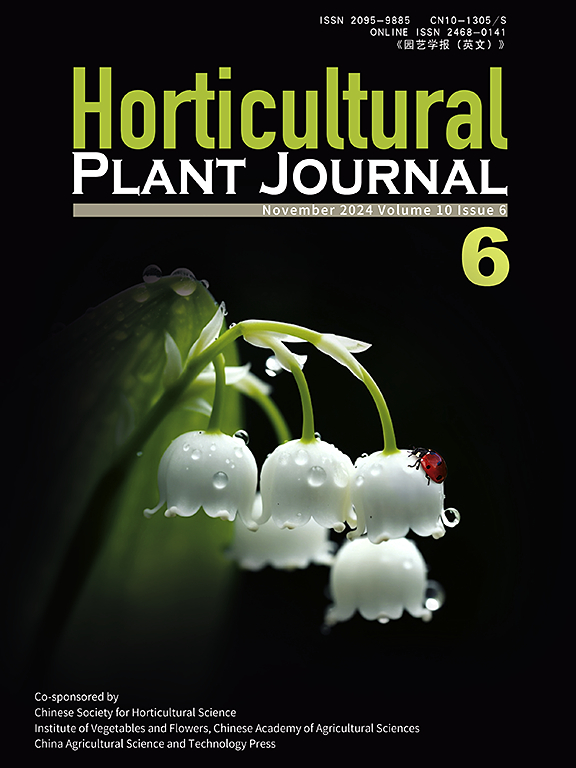The role of PYL genes as core components of abscisic acid signaling in plant abiotic stress response
IF 6.2
1区 农林科学
Q1 HORTICULTURE
引用次数: 0
Abstract
The PYL gene family, encoding core ABA receptors, plays a pivotal role in abiotic stress adaptation and growth regulation in horticultural crops. By binding ABA via its conserved structural domain, PYL proteins initiate signaling cascades through PP2C phosphatase inhibition, precisely modulating downstream ABA responses. This review systematically examines the functional diversification of PYL members and their stress-responsive expression patterns in horticultural species. PYL participates in physiological processes involved in ABA signal transduction regulation. These include stomatal movement, transcriptional regulation, and metabolic regulation, thereby enhancing tolerance to abiotic stresses encountered in horticultural production, such as drought, salinity, low temperature, and darkness. Furthermore, PYLs also regulate developmental traits such as seed germination and root structure, highlighting their dual role in stress resistance and growth and development. The genetic and regulatory complexity of the PYL family offers valuable targets for molecular breeding in horticulture. Future research should elucidate crop-specific PYL regulatory networks to advance precision breeding strategies for sustainable horticultural systems.PYL基因作为脱落酸信号的核心组分在植物非生物胁迫响应中的作用
PYL基因家族编码核心ABA受体,在园艺作物的非生物胁迫适应和生长调控中起着关键作用。PYL蛋白通过其保守结构域与ABA结合,通过PP2C磷酸酶抑制启动信号级联反应,精确调节下游ABA反应。本文综述了园艺植物中PYL成员的功能多样性及其应激响应表达模式。PYL参与ABA信号转导调控的生理过程。这些包括气孔运动、转录调控和代谢调控,从而增强园艺生产中遇到的非生物胁迫的耐受性,如干旱、盐度、低温和黑暗。此外,pyl还调节种子萌发和根系结构等发育性状,突出了其在抗逆性和生长发育中的双重作用。PYL家族的遗传和调控复杂性为园艺分子育种提供了有价值的靶点。未来的研究应阐明作物特异性PYL调控网络,以推进可持续园艺系统的精准育种策略。
本文章由计算机程序翻译,如有差异,请以英文原文为准。
求助全文
约1分钟内获得全文
求助全文
来源期刊

Horticultural Plant Journal
Environmental Science-Ecology
CiteScore
9.60
自引率
14.00%
发文量
293
审稿时长
33 weeks
期刊介绍:
Horticultural Plant Journal (HPJ) is an OPEN ACCESS international journal. HPJ publishes research related to all horticultural plants, including fruits, vegetables, ornamental plants, tea plants, and medicinal plants, etc. The journal covers all aspects of horticultural crop sciences, including germplasm resources, genetics and breeding, tillage and cultivation, physiology and biochemistry, ecology, genomics, biotechnology, plant protection, postharvest processing, etc. Article types include Original research papers, Reviews, and Short communications.
 求助内容:
求助内容: 应助结果提醒方式:
应助结果提醒方式:


